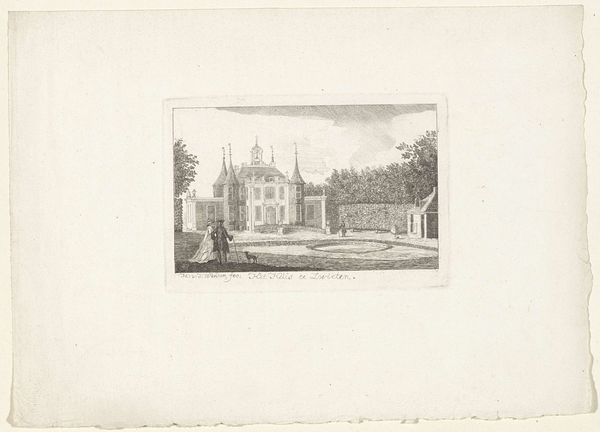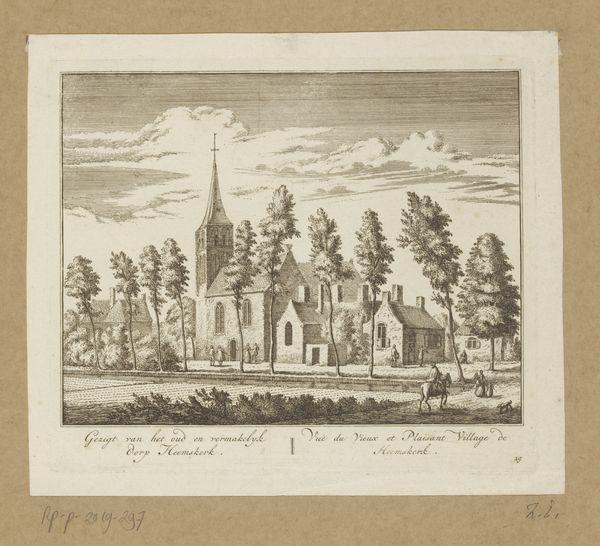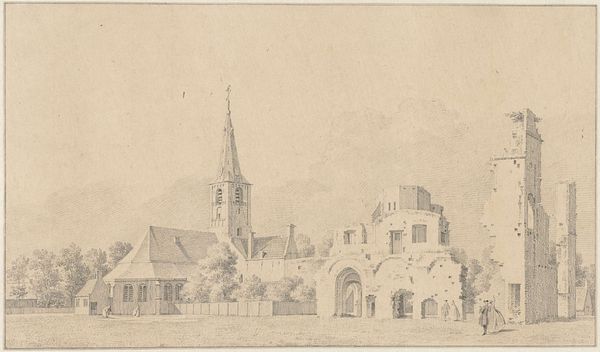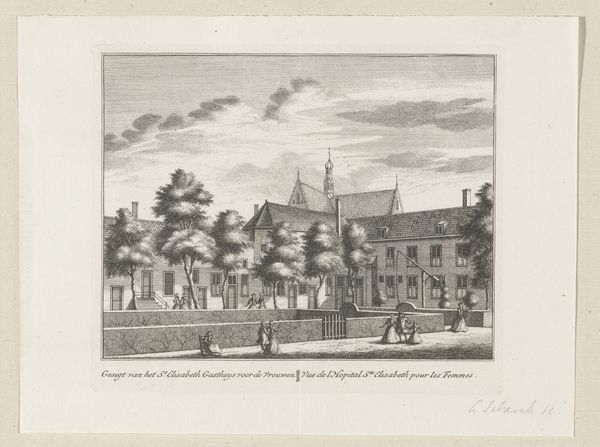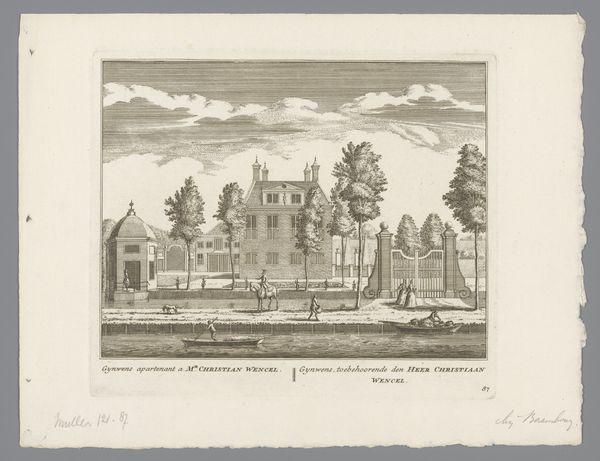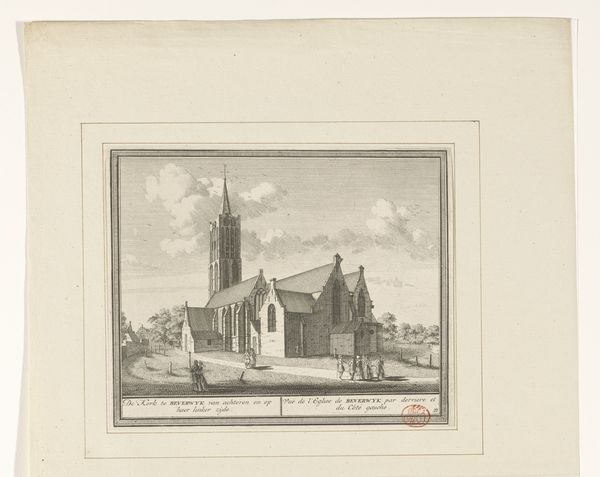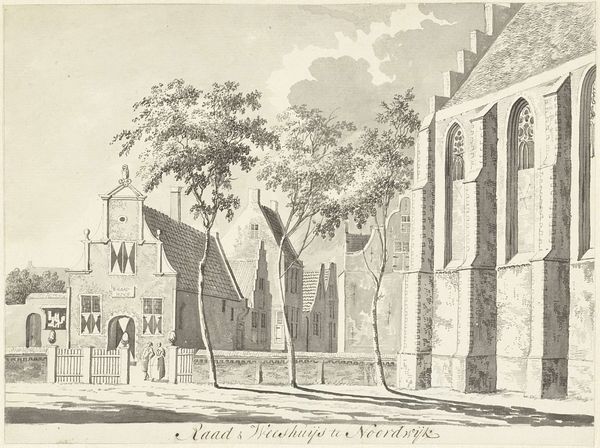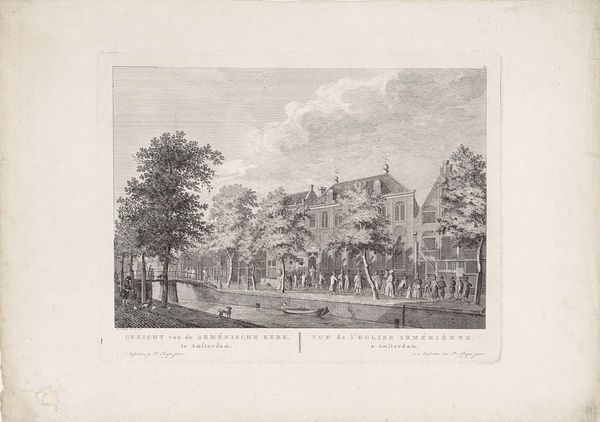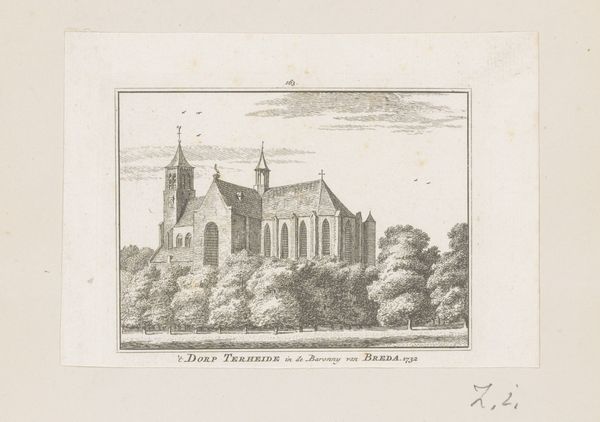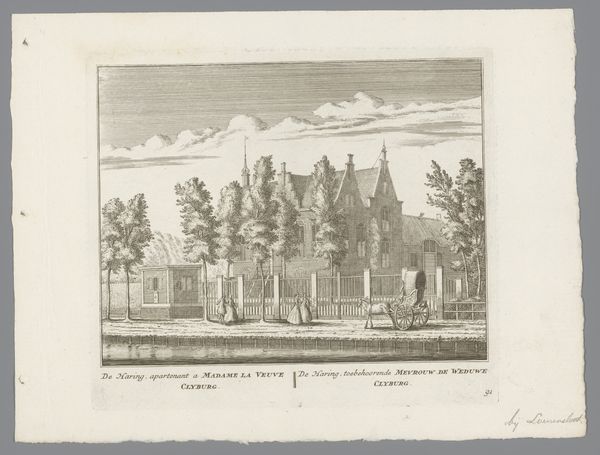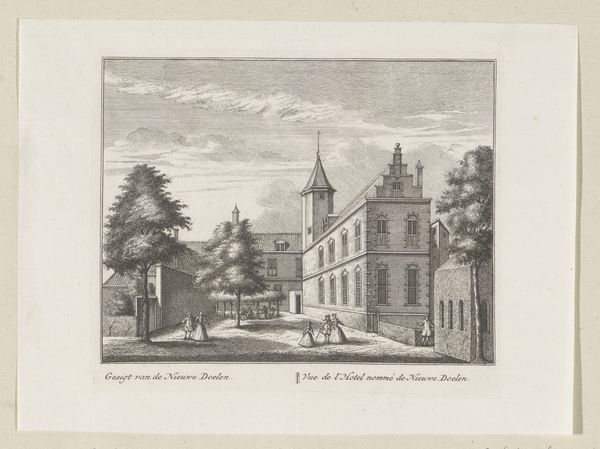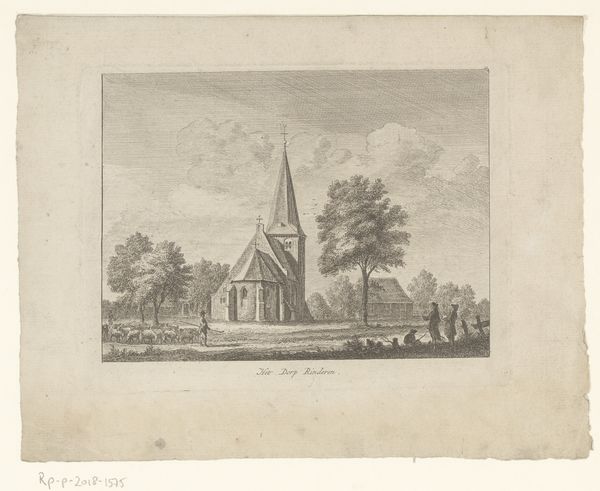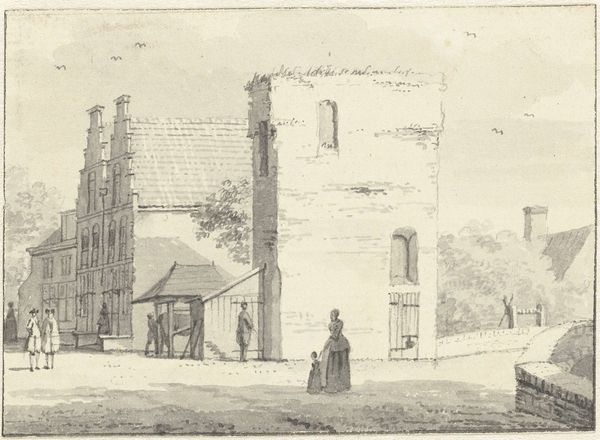
drawing, print, etching
#
drawing
#
dutch-golden-age
# print
#
etching
#
landscape
#
etching
#
cityscape
Dimensions: height 173 mm, width 215 mm
Copyright: Rijks Museum: Open Domain
Editor: So, this etching and drawing is titled "Kasteel 't Kind van Trente bij Kruiningen" – or, Castle 't Kind van Trente near Kruiningen. It’s from somewhere between 1685 and 1735 and was made by Abraham Rademaker. It has a surprisingly calming atmosphere despite the rather serious architecture. What really jumps out to you about this work? Curator: Calm is an interesting word! Perhaps it’s the muted tones, the gentle etching… though I can't help but feel a sense of longing when I look at it. Rademaker really captures that feeling of distance, of observing a grand estate from afar. It's like a stage set, isn’t it? Look how he’s arranged the figures – almost like actors in a play, drawing our eyes deeper into the scene. What do you think Rademaker was trying to convey by framing the castle in this particular way? Editor: That’s a cool idea; I had not considered the figures like that. I guess that's what gives it that sense of timelessness, of frozen drama. I mean, you almost want to invent the scene that is taking place with the characters depicted. It could be anything! I imagine, like a tableau vivant from a novel! Curator: Exactly! And think about what that stillness means for us. We, as viewers, are invited to become part of the story, to fill in the gaps and imagine what's beyond the frame. What I’m wondering, though: Is Rademaker showing us a specific place, or perhaps an imagined one filled with symbols? Or is he prompting a collective nostalgic imagining? Editor: I wonder if it’s both? Showing a specific castle to prompt collective nostalgia! So it becomes something more, something beyond just the image of bricks and mortar! It has to be an etching I revisit again. Curator: Yes! The image is not just seen for its architecture. But felt in an imaginary sense, too. Art reflecting real things – which is a neat concept to reflect upon!
Comments
No comments
Be the first to comment and join the conversation on the ultimate creative platform.

